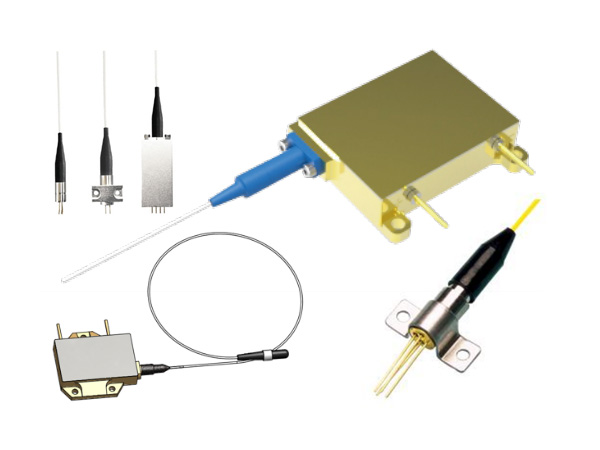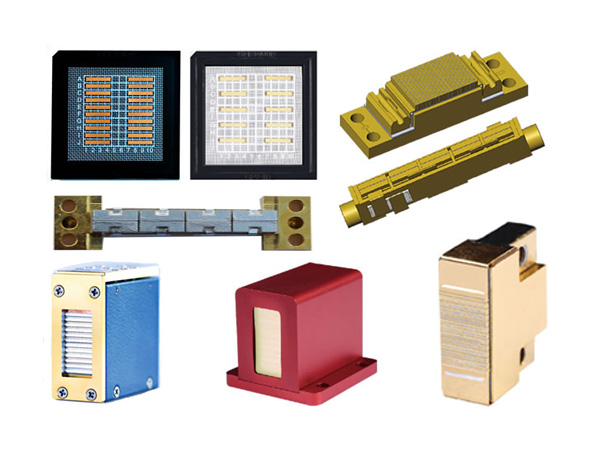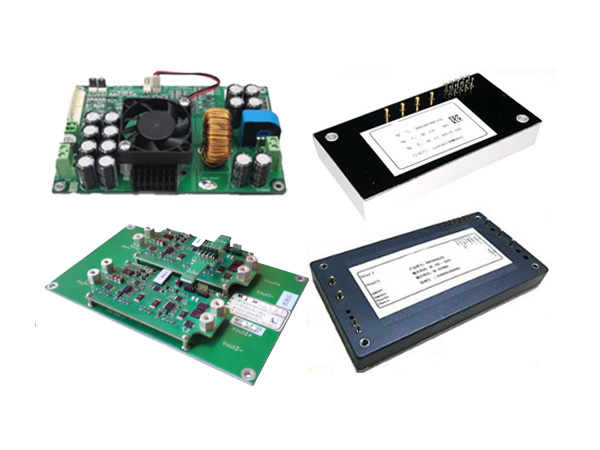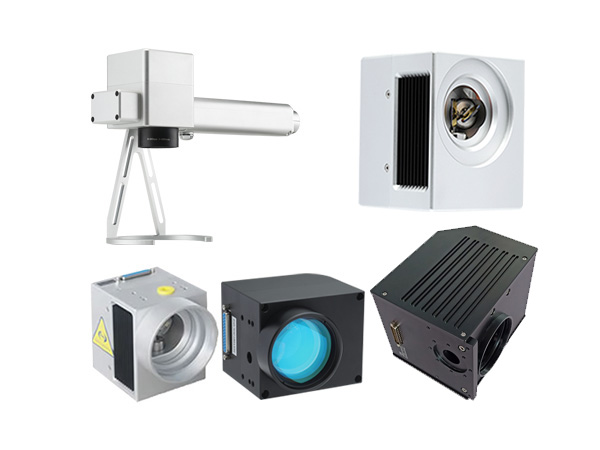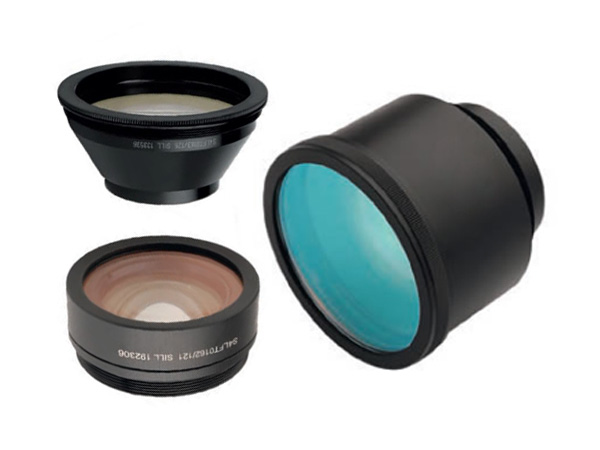Robotic 3D laser cutting machine reshapes the logic of axle intelligent manufacturing
In the field of commercial vehicle manufacturing, as core power transmission components, axles play a key role in bearing the weight of the vehicle body, transmitting driving torque, achieving steering control and driving safety. Their manufacturing precision directly determines the safety and durability of the vehicle. In traditional manufacturing, the cutting of axle components mainly relies on traditional processes such as grinding wheel cutting and oxygen-acetylene gas cutting. Although these methods are low-cost, here’re problems such as insufficient precision, large thermal deformation, large secondary processing volume, and difficulty in processing complex curved surfaces, which have restricted the efficiency and quality of axle manufacturing.
With the rapid development of new energy commercial vehicles, the trend of vehicle lightweighting, customization and intelligent manufacturing is accelerating, and the processing technology of axle parts is also quietly changing. Robot 3D laser cutting technology is gradually replacing traditional methods and becoming an important driving force for industry upgrading. This high-precision, non-contact processing method can not only efficiently complete the cutting of complex curved surfaces, but also significantly improve the manufacturing accuracy and structural strength of core components such as axle housing and steering knuckles, providing new possibilities for lightweighting and performance improvement of commercial vehicles.
Commercial vehicle axles can be divided into two types according to their position and function: front axles and rear axles. The front axle is mainly responsible for steering and partial load-bearing functions. It is composed of a forged steel front beam, a steering knuckle, a kingpin and a wheel hub. The wheel steering is achieved by the kingpin articulation. The rear axle, as the core of power output, includes four major components: the main reducer, the differential, the half shaft and the axle housing.
Axles can be divided into integral and disconnected types according to their structures. Integral cast or stamped and welded axle housings are widely used in commercial vehicles. Cast axle housings have high rigidity but complex processes, while stamped and welded axle housings are gradually replacing casting processes due to their advantages such as light weight, high cleanliness, and low failure rate. A complete axle system consists of a variety of structural parts, including but not limited to axle housings (drive axle housings, steering axle housings), main reducer housings, half shafts, half shaft sleeves, differential housings, flanges, connecting plates, various reinforcement plates, limit seats, brackets, suspension ear shafts, brake brackets, ABS sensor fixings, etc. These parts often have complex shapes and variable structures, and require higher cutting quality and flexible processing capabilities.
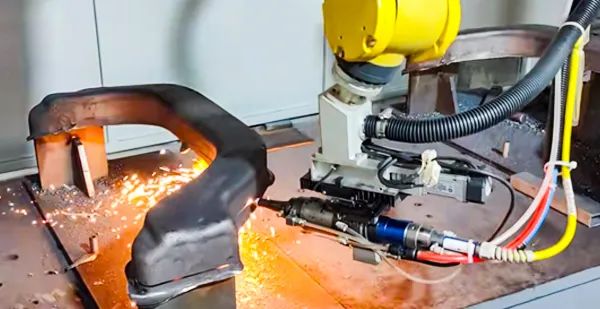
Traditional axle cutting and unloading
In the production and manufacturing process of commercial vehicle axles, cutting and unloading is an important initial process. Traditional cutting and unloading methods mainly include flame cutting, plasma cutting, punching, sawing unloading, ect.
1. Among them, flame cutting equipment is simple and low in cost, suitable for medium and thick plate processing. It has low cutting accuracy and rough edge quality, which easily leads to material waste. The thermal effect of the incision is large, which affects the quality of the axle components and requires secondary milling correction.
2. Compared with flame cutting, the investment cost of plasma cutting equipment is relatively higher and the maintenance is more complicated. It has the advantages of fast cutting speed, narrow incision and high cutting accuracy. It can cut a variety of metal materials such as stainless steel and aluminum. The cutting process will also produce thermal deformation, and the plasma arc will produce strong noise, strong light and harmful gases, which will cause certain harm to the working environment and the health of operators.
3. Punching is suitable for unloading parts with large batches and regular shapes. It has high production efficiency and can ensure a certain dimensional accuracy. However, it requires the production of special molds, which has poor flexibility, long mold design and manufacturing cycles, and high costs. It is not suitable for small batch and multi-variety axle production. The punching process will produce a large impact force on the plate, which is easy to cause deformation of the plate. For some soft materials or materials with high flatness requirements, the parts after punching may need to be leveled.
4. Sawing machine is suitable for batch straight line cutting, with better precision than gas cutting, easy operation and low cost, but the burrs are easily generated on the cutting surface, low efficiency, and can only process simple geometric shapes, and cannot process complex three-dimensional curved surface parts such as steering knuckles.
All of the above methods require drilling machines or tapping machines to drill holes in later processing, multiple process collaboration, a lot of manual interventions, complicated processes, frequent fixtures changes, low overall efficiency, and a long production cycle.

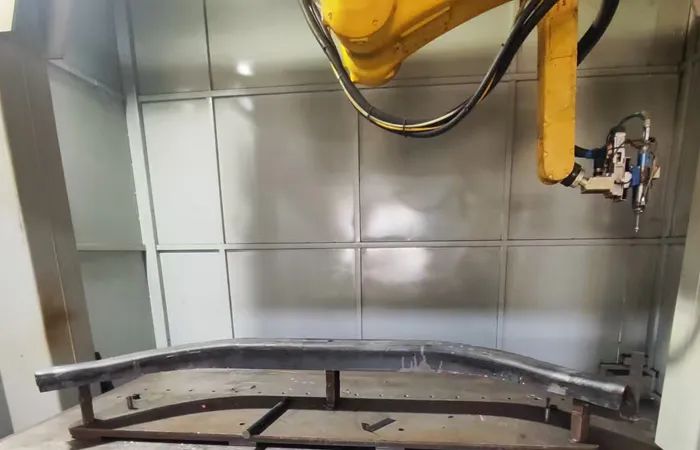
Technical advantages of robot 3D laser cutting machine
With the continuous development of laser technology, robot 3D laser cutting has been more and more widely used in the field of commercial vehicle axle manufacturing. Through the perfect combination of six-axis industrial robots and high-precision fiber laser systems, dynamic 2D and 3D cutting can be easily realized in one-time forming. Special-shaped pipes, stamping parts, and structural parts can be processed at any angles and any curved surfaces in one time. Whether it is the axle tube, flange or connecting parts of the axle, it can be accurately cut to ensure good fittings between the parts, effectively avoiding assembly difficulties and safety hazards caused by dimensional errors. Compared with traditional cutting and unloading methods, it has the following significant advantages:
Strong flexible processing capability, unlimited cutting shapes
The robot 3D laser cutting machine is equipped with a professional CNC system and teaching programming or offline simulation software. It can change or replace the cutting program of the product at any time according to different design requirements, and realize the cutting and processing of various complex-shaped axle parts. There is no need to make special molds like punching. One machine can be used for multiple purposes. One device can complete the batch cutting and production of more than 20 parts such as front axle I-beams and rear axle housings, or complete the curved opening and end face arc repair of complex-shaped parts such as bridge shells in one clamping. Multiple cutting processes have greatly improved production efficiency and effectively shortened the development cycle and production cost of new products. It is particularly suitable for small-batch, multi-variety axle production mode.
High-precision, burr-free cutting
The robot 3D laser cutting machine can achieve high-precision cutting with narrow cutting seams. High-precision cutting can reduce the subsequent grinding process, improve the dimensional accuracy and assembly accuracy of the axle components, thereby improving the overall quality and performance of the axle, making the axle housings and other components more closely matched, and reducing abnormal noise and vibration during vehicle driving.
Narrow kerf and good incision quality
The robot 3D laser cutting machine can capture the complex curved surfaces and irregular shapes of the axle in real time, ensuring that the laser beam is always vertical to the cutting surface, achieving high-precision cutting, smooth incision, no burrs, no slag, fine kerf, and less material loss. The heat-affected zone at the incision is extremely small, and the effect on the organization and performance of the material is minimal, and basically does not change the original properties of the material. For some axle parts with high material performance requirements, such as half shafts made of high-strength alloy steel, traditional gas cutting requires stress relief annealing, while laser cutting can directly enter the fine grinding process without secondary trimming or polishing, reducing the process and ensuring reliability and durability during use.
Green and environmentally friendly processing
The robot 3D laser cutting machine does not produce harmful gases and waste residues during the cutting process, has low noise pollution, it’s environmentally friendly. Compared with traditional cutting methods, it has lower energy consumption and belongs to energy-saving processing technology. It meets the requirements of modern environmental protection and sustainable development, which is conducive to enterprises to reduce production costs and improve corporate image.
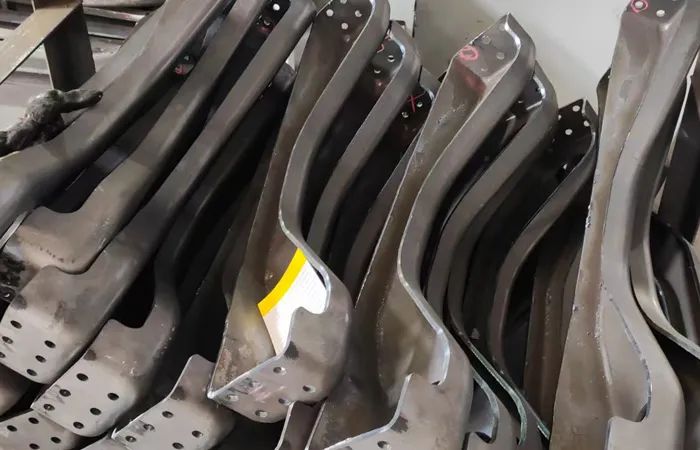
Application scenarios of robot 3D laser cutting machines in axle manufacturing
Traditional axle processing requires multiple processes such as cutting, milling, drilling, and grinding. The transfer and clamping between equipments is not only time-consuming, but also accumulates errors. The intervention of robot 3D laser cutting machines has completely changed this situation. In the process of commercial vehicles upgrading to high efficiency, safety, and intelligence, robot 3D laser cutting machines are creating a process innovation in many key links of axle manufacturing with their flexible motion trajectory and high-precision cutting capabilities. They have penetrated into the entire chain of axle core components and connector manufacturing, and realized the process integration from multi-machine decentralized processing to one-stop integrated manufacturing. It not only solves the precision bottleneck that is difficult to break through in traditional processes, but also provides technical confidence for axle manufacturing companies to cope with market changes with the advantages of flexibility and intensiveness.
In addition to the main structure of the axle housing, there are also a large number of brackets, flanges, lifting lugs, limiters, reinforcing ribs, bolt holes and other connectors in the axle system. These structures are usually complex stampings or welded parts, and it is difficult to process the holes after forming using traditional methods. The robot 3D laser cutting machine solves this problem. It can not only accurately cut holes and chamfer corners after stamping, but also pre-treat welded edges and grooves cutting, greatly improving assembly accuracy and welding quality, and truly realizing that structural parts are formed as final parts and cut as assembly.
With the popularity of high-power fiber lasers, the cutting speed of thick axle housing plates is getting faster and faster. Robotic 3D laser cutting machines are being upgraded from optional processes to the standard configuration for axle manufacturing. From core components to small connectors, robotic 3D laser cutting machines have formed full-scenario penetration in axle manufacturing. Here are typical application scenarios as bellow:
1. Axle housing cutting and processing: As the skeleton of the axle, the axle housing needs to bear more than 70% weight of the vehicle, and its structural strength and dimensional accuracy are crucial. In the processing of heavy-duty truck driving axle housings, the robot 3D laser cutting machine can accurately track the curved trajectory of the axle housing, complete the bevel cutting of the flange surfaces at both ends, the special-shaped processing of the middle weight-reducing holes, oil drain holes and gas plug holes, and the contour cutting of the suspension mounting seat. The single processing time is greatly shortened, the heat-affected zone of the axle housing cutting is smaller, and with the protection of inert gas, burr-free cutting can be achieved, the cutting and forming can be done in one time, directly meeting the process requirements.
2. Steering knuckle and wheel hub: As a key component connecting the front axle and the wheel, the knuckle has extremely high processing accuracy requirements for its fork structure, journal end face and mounting hole. The traditional stamping + milling process requires multiple processes and the mold cost is extremely high. The robot 3D laser cutting machine can directly generate the cutting path according to the 3D model through offline programming and mapping, and complete the shoulder fillet cutting and ball stud mounting hole precision cutting on the high-strength steel steering knuckle blank at one time. The processing of the wheel hub can better reflect the flexibility of the robot 3D laser cutting machine. Most commercial vehicle wheel hubs are bell-shaped structures, and it is necessary to cut heat dissipation holes and bolt mounting holes on the curved end face. Traditional drilling processing is prone to deformation of the wheel hub due to radial force, while the robot 3D laser cutting machine can compensate for the workpiece clamping error in real time and complete the cutting of the inclined hole during the rotation process, greatly reducing the single-piece processing time and workpiece scrap rate.
3. Braking system components: The matching accuracy between the brake base plate and the brake drum directly affects the braking effect. If the position error of the ventilation holes exceeds 0.5mm, it may cause uneven wearing of the braking . In the processing of the brake base plate, the robot 3D laser cutting machine can simultaneously complete the outer edge contour cutting and the group hole processing of the ventilation holes. The hole position tolerance is small, ensuring a perfect fit with the brake shoe.
4. Special-shaped connectors and brackets: Special-shaped parts such as brackets connecting the axle and the frame, thrust rod supports, etc., are often designed differently depending on the model. The development cycle of traditional stamping dies is long and it is difficult to adapt to small-batch production of multiple varieties. The robotic 3D laser cutting machine directly drives the cutting path through the teaching programming map, and can complete complex contour processing without a mold while ensuring the strength of the load-bearing surface. The delivery cycle of new product samples is greatly shortened. Since there is no need to open the mold, the manufacturing cost of each piece is lower. Especially in the field of new energy commercial vehicles, the differentiation of battery layout requires frequent adjustments to the axle connectors. The flexible production capacity of the robotic 3D laser cutting machine has become the core competitiveness to quickly respond to market demand.
Future trends: intelligence and full-process integration
With the constant upgrades of the commercial vehicle technology, the traditional extensive processing mode can no longer adapt to modern lightweight, personalized, and intelligent needs. With its advantages of high precision, high efficiency, and strong flexibility, the robot 3D laser cutting machine is gradually being integrated into all aspects of axle manufacturing, promoting chassis structural parts from rough manufacturing to precise intelligent manufacturing, and completely solving the problems of precision distortion, process redundancy, and lack of flexibility in traditional axle manufacturing. If you have problems of axle cutting, please try the robot 3D laser cutting machine to open a new era of commercial vehicle axle cutting! For more further information, pls click here.
 English
English Français
Français Deutsch
Deutsch euskara
euskara Русский язык
Русский язык Italiano
Italiano Português
Português Nederlands
Nederlands Polski
Polski Greek
Greek Lietuva
Lietuva Türkçe
Türkçe 日本語
日本語 한어
한어 中文
中文 தாமில்
தாமில் فارسی
فارسی हिंदी
हिंदी Tiếng Việt
Tiếng Việt ภาษาไทย
ภาษาไทย Pilipino
Pilipino Indonesia
Indonesia தாமில்
தாமில்
